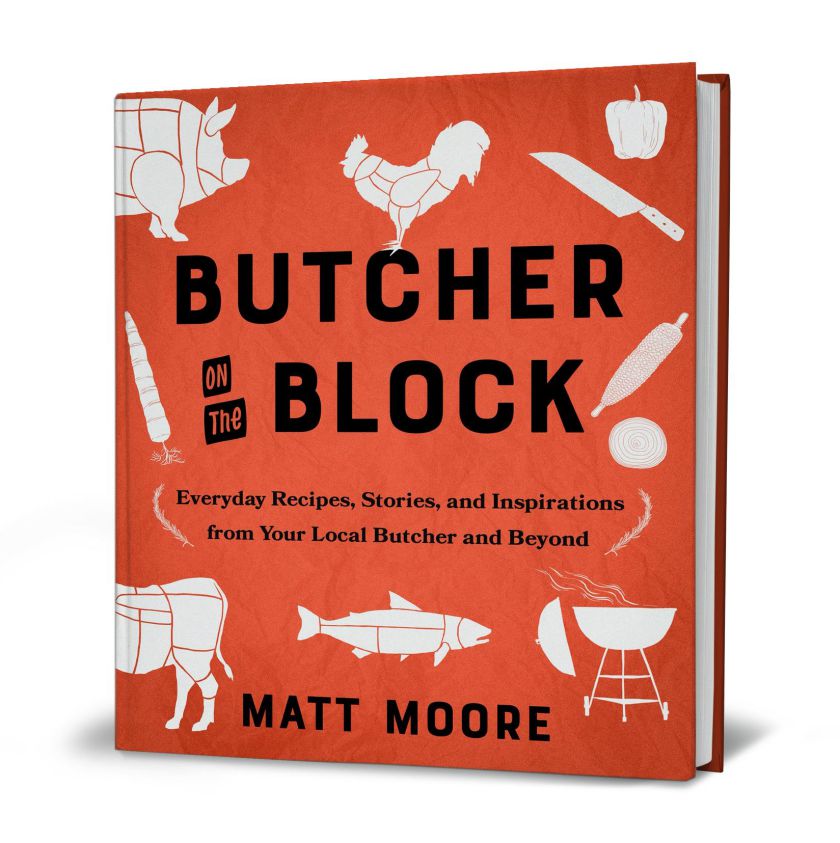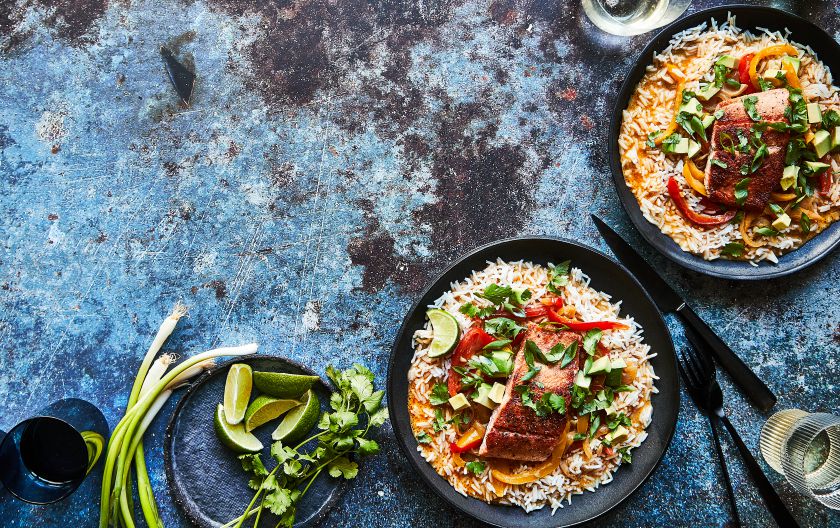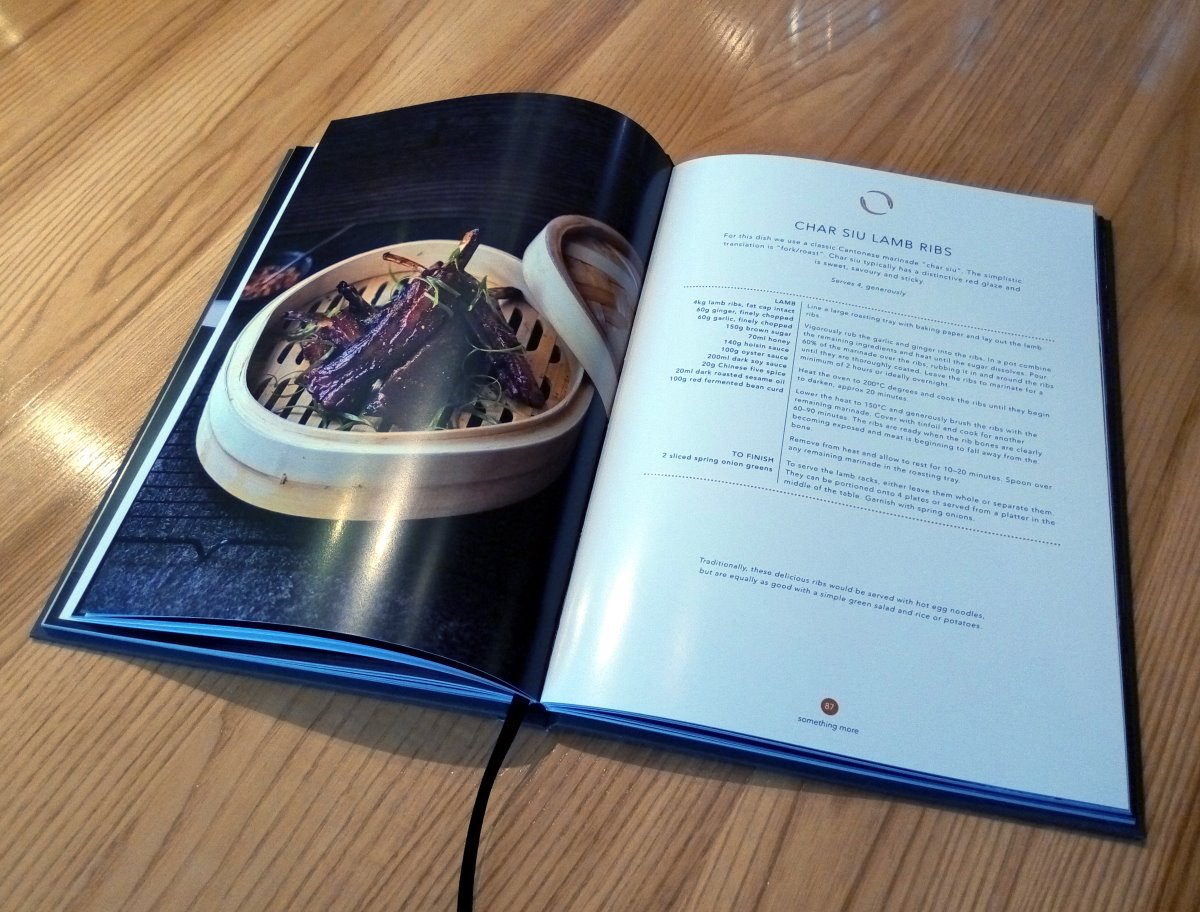Fired up and ready to go: chef and renaissance man Matt Moore hits the road


The airwaves and social media channels are populated with chefs whose back stories are as flavourful as their recipes. Some lean into the cuisine inspired by their childhoods or their family ancestry. Matt Moore has tapped into this through recipes that speak to both his southern US upbringing and his Lebanese roots. However, he takes his persona further by finding ways to weave in his other passions as a musician and pilot. The mix of ingredients simmers into a kind of showmanship that has led to appearances in top media such as Esquire, Wall Street Journal, CBS’s Saturday Morning and various programmes on the BBC and the Hallmark Channel.
The Nashville-based Moore is also an engaging food writer, and manages to fit in imaginative and impressive volumes that are anything but your grandparents’ cookbooks. In 2020, he provided inspiration for home-bound home cooks through his book Serial Griller: Grillmaster Secrets for Flame-Cooked Perfection (Houghton Mifflin Harcourt, US$19·80). His best-selling 2015 book A Southern Gentleman’s Kitchen includes 11 recipes inspired by his Middle Eastern roots, such as za’atar-spiced wings and chicken shishlik. Serial Griller, meanwhile, dives into the all-American barbecue cookout and how the US’s diverse populations continue to shape what’s seared and served.
With the pandemic mostly beyond the rear-view mirror as far as mainstream media are concerned, Moore figuratively and literally hit the road to put together his fifth book, Butcher on the Block. While it does have recipes (125), grilling and food prep suggestions, and lots of guidance for both avid home cooks and beginners, the book is a cross-country odyssey (with a detour to France) where Moore introduces you to some of the finest protein purveyors from across the US (Hing Lung Company in San Francisco; Cara Mangini, author of The Vegetable Butcher; Red’s Best in Boston; Maison Mallard in France; and Tommie Kelly, the butcher at Matt’s own local Kroger’s) as he believes that even the most seasoned cooks can carve out the best advice from their local butchers and purveyors.
We caught up with Moore between recording sessions for his music and cooking demos for television and social media to learn how this ambitious but utterly approachable and appetizing three-section book came together.
Lucire Rouge: How did the concept for Butcher on the Block come about, and was it shaped by the books that came before it?
Matt Moore: The South’s Best Butts was effectively a grand tour of the barbecue belt and its pit masters, while Serial Griller continued the conversations with grill masters and insight into various ways to cook over a live fire. As I had gathered lot of expertise in the barbecue and grilling space, my publisher wanted me to have a concept for my fifth book that would basically combine those two disparate worlds and, the more I thought about the idea, I felt it would provide me an opportunity to go all the way back to the beginning to my own family story, especially my Lebanese grandfather and those who came before him to open a butcher shop.
From there, I explored the world of the butcher craft and trade as it takes on many different forms. It’s something that’s practised in all cultures and cuisines around the world. This, in turn, prompted me to travel over the US and go to France to meet some of the best in the business and trade ideas. However, the trade is not limited to livestock and game meats as there are now “butchers” working with seafood and vegetables as palates expand.
How did you approach individuals about participating in this book?
There’s really never a rhyme or reason to the madness. There was one instance where I was in Williamsport, Pennsylvania and my flight out was cancelled, I had to find a place to eat, and the butcher I had met during this experience became a friend and a feature. As I travel for my other business around the US and to the south of France, I have met skilled butchers based on recommendations of colleagues or approached strangers based on their long history and family stories in the field, like Vincent in the Bronx. Ultimately, I just try to find interesting people that are doing unique things and approach them.
Why is the timing for Butcher on the Block right, in terms of how people are cooking and entertaining now?
The book ends up have a central theme about fostering community, and for me, a local butcher or grocer is an important part of it. While I see them three to four times a day for what I do professionally, the average person interacts with them on a weekly basis. That said, I think these interactions can provide great opportunities to create and build friendships.
With the spike in home cooking and entertaining during the pandemic, I thought it may be useful to dedicate space at the beginning of the book about useful things such as instruction on breaking down a whole chicken. During the height of COVID, all the chicken breast and chicken thighs were sold out, but there would be whole chicken sitting there. There’s also a lot of information on more affordable cuts of meat beyond rib eye and fillets. When it comes to expanding your options in the kitchen, it makes sense to go old school and ask your butcher for advice and ideas.
This book is truly inclusive as a vegetable butcher is a part of the overall conversation. How did this come about?
While it is little bit tongue-in-cheek to describe Cara Mangini as a vegetable butcher, it reflects that there’s a correct way of breaking down a cauliflower to make a cauliflower steak or to cut vegetables for stir fry. I met Cara through a mutual literary agent. Ultimately, she was super-gracious and comes from a family of butchers. While she is the focus of the vegetable butchering section, she offers great insights, including things her family introduced her to as she learned her trade.
What are some solid tips readers can pick up just from glancing through the book?
Spending more time at a butcher shop as opposed to a supermarket’s meat counter, especially as they offer a broader selection of cuts and better-quality meats. You might pay a little bit more for fresh ground meat, but the quality and the taste is just so much better than anything that just comes pre-packaged. A lot of butcher shops are also known for making in-house specialities like sausage or burgers, and the ethnicity of the owners or the store’s location may influence what they specialize in. Plus it opens up an opportunity to meet people and foster relationship when seeking out a higher-quality product.
That said, we feature a guy named Tommy Kelly in Nashville who works at a major grocery store. Although he is not a butcher, per se, he works with butchers and knows what’s good. He has advice on how to procure good products because at the end of the day, butchers are in business to sell you a good product and they want repeat customers.
After you finish promoting your book, what will be your next project or projects?
I recently wrapped the second season a five-episode series called Taste of Tennessee on the LG network and Hungry Channel that will be coming out this fall. As an author, you always wonder if you are as good as your last book. However, I have had fun putting the show together focused on barbecue and grilling that expands the scope of what a cooking show is supposed to be.
To learn about Matt Moore and his endeavours, visit www.MattRMoore.com
and www.haveheroverfordinner.com.
Recipe

Copyright ©2020 by Andrea Behrends and Helene Dujardin. Reproduced by permission of Houghton Mifflin Harcourt
Coconut curry salmon
Serves four, 30 minutes
Chef’s note: ‘This is my go-to dish on cold, rainy evenings when I’m craving delicious Thai-style flavours and a warm comforting meal without busting my waistline. While this dish tastes like it took hours to prepare, the honest truth is it can be whipped up in under 30 minutes, making it a weeknight-friendly family meal. You can throw an array of different veggies into the curry, from diced squash and zucchini to a handful of fresh spinach—it’s a good way to sneak in some extra goodness that gets enveloped by the sauce. I prefer to sear the salmon separately, rather than poach it in the sauce, as I like the seared texture. That said, if you are really in a pinch, you can put together the curry, add the uncooked salmon to the dish, cover, and cook for about 10 minutes, until medium. I like to serve this over fragrant basmati rice, so it soaks up all the sauce, but if you want to lighten the load, you can sub in brown rice, quinoa, or cauliflower rice.’
4 tablespoons unsalted butter
1 cup thinly sliced Vidalia onion
1 cup thinly sliced yellow bell pepper
1 cup thinly sliced red bell pepper
3 cloves garlic, minced
1-inch piece fresh ginger, peeled and finely minced
2 tablespoons red curry paste
1 tablespoon honey
2 13½ oz cans coconut milk
3 tablespoons light soy sauce, plus more as needed
1 tablespoon sriracha
1 tablespoon grated lime zest
3 tablespoons lime juice, plus more as needed Salmon
4 6 to 8 oz salmon fillets, skin removed
1 teaspoon garlic powder
1 teaspoon kosher salt
½ teaspoon fresh-cracked black pepper
2 tablespoons unsalted butter
6 cups hot cooked basmati rice
¼ cup chopped fresh cilantro
¼ cup thinly sliced scallions
1 ripe avocado, peeled, pitted, and chopped into ½-inch chunks
Lime wedges
To make the coconut curry
1. For the coconut curry, heat a dutch oven over medium heat and add the butter.
2. When the butter is melted, add the onion and bell peppers and cook, stirring often, for 3 to 4 minutes, or until just tender.
3. Add the garlic and ginger and cook, stirring, for 1 minute. Add the curry paste and honey, stir, and cook for 2 minutes to toast the paste.
4. Add the coconut milk, stir the mixture well, and allow it to come to a slow simmer.
5. Add the soy sauce, sriracha, lime zest, and lime juice, and taste for seasoning, adding a bit more soy if more salt is needed, or more lime to balance out the salt flavour.
6. Simmer the curry slowly for 15 to 20 minutes, until it’s slightly thickened and reduced by one-third.
To prepare the salmon
1. Pat the salmon fillets dry using a paper towel and season evenly with the garlic powder, salt, and black pepper.
2. Heat a large skillet over medium heat and add the butter.
3. When the butter begins to foam, add the salmon fillets with the side the skin was on facing up. Allow to sear, undisturbed, for 5 minutes.
4. Using a spatula, carefully flip the salmon fillets and continue to cook until medium, about 140ºF, or another 2 to 3 minutes.
5. Using a towel to protect your hand, tilt the skillet to capture the butter and drippings and use a spoon to baste the fish during the process.
To serve
1. Divide the rice among four shallow bowls.
2. Place the salmon fillets on top of the rice, and ladle a cup or so of the coconut curry over the salmon.
3. Divide the cilantro, scallions, and avocado among the bowls.
4. Place the lime wedges on the side and serve.


















